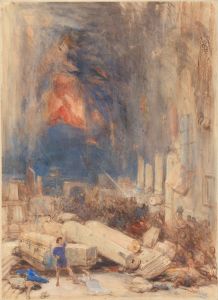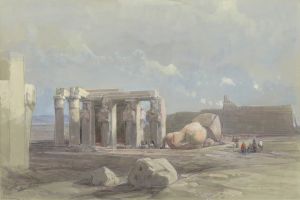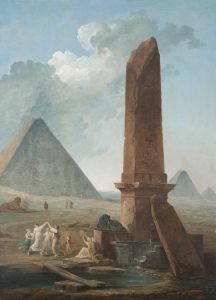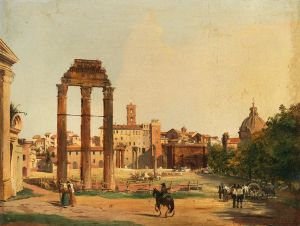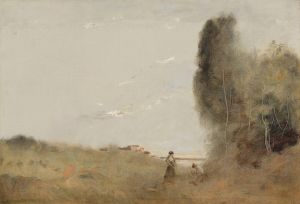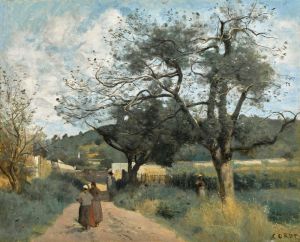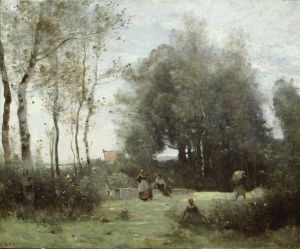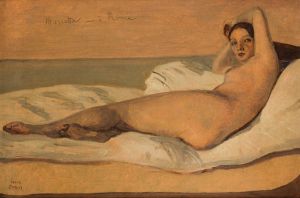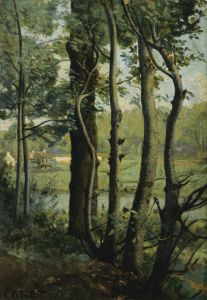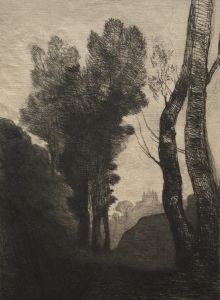
Monte Pincio, Rome
A hand-painted replica of Jean-Baptiste-Camille Corot’s masterpiece Monte Pincio, Rome, meticulously crafted by professional artists to capture the true essence of the original. Each piece is created with museum-quality canvas and rare mineral pigments, carefully painted by experienced artists with delicate brushstrokes and rich, layered colors to perfectly recreate the texture of the original artwork. Unlike machine-printed reproductions, this hand-painted version brings the painting to life, infused with the artist’s emotions and skill in every stroke. Whether for personal collection or home decoration, it instantly elevates the artistic atmosphere of any space.
Jean-Baptiste-Camille Corot, a prominent French landscape painter, created "Monte Pincio, Rome" during his extensive travels in Italy. Corot is renowned for his role in bridging the Neoclassical tradition with the emerging Impressionist movement, and his works often reflect a harmonious blend of realistic detail and atmospheric effects. "Monte Pincio, Rome" is one of the many paintings that Corot produced during his time in Italy, a period that significantly influenced his artistic development.
Monte Pincio, also known as the Pincian Hill, is one of the hills in Rome that offers a panoramic view of the city. It is a location that has inspired many artists due to its scenic vistas and historical significance. Corot visited Italy for the first time in 1825 and stayed until 1828, a trip that was crucial in shaping his artistic style. During this period, he painted numerous landscapes and cityscapes, capturing the unique light and atmosphere of the Italian countryside and urban settings.
"Monte Pincio, Rome" exemplifies Corot's ability to depict the serene beauty of the landscape with a delicate touch. His use of soft, muted colors and gentle brushwork creates a tranquil scene that invites viewers to appreciate the natural beauty of the location. Corot's landscapes are often characterized by their poetic quality, and this painting is no exception. The composition likely includes elements such as trees, pathways, and possibly distant views of Roman architecture, although specific details of the painting's composition are not widely documented.
Corot's work during his Italian sojourn laid the groundwork for his later success and influence. He was particularly interested in capturing the effects of light and atmosphere, a pursuit that would later resonate with the Impressionists. Although Corot himself is not classified as an Impressionist, his approach to painting nature with an emphasis on mood and light had a profound impact on the movement.
The painting "Monte Pincio, Rome" is part of Corot's broader body of work that reflects his fascination with Italy and its landscapes. His Italian paintings are celebrated for their clarity and luminosity, qualities that he achieved through careful observation and a deep appreciation for the natural world. Corot's ability to convey the essence of a place through his art has earned him a lasting place in the history of landscape painting.
While specific details about the painting's current location or provenance might not be readily available, Corot's works are held in high esteem and are featured in major art collections worldwide. His influence extends beyond his own time, as he is often credited with paving the way for future generations of artists who sought to capture the fleeting effects of light and atmosphere in their work.






